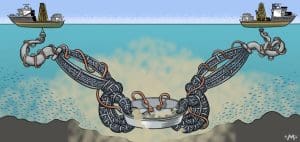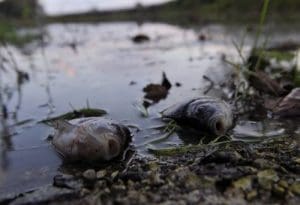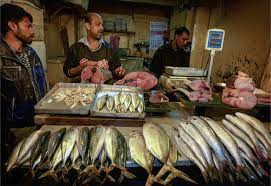
In the vast expanse of our world’s oceans, rivers, and lakes, a vital profession thrives – fishing. The act of catching fish for sustenance and commerce has been an integral part of human history, providing not only food security but also shaping the cultural fabric of numerous communities. This article delves into the heart of “Fishing as an Occupation,” exploring the various dimensions that make it indispensable to societies globally.
As we cast our nets into the ocean of this topic, we will navigate through the evolution of fishing methods, from age-old traditions to the cutting-edge technologies that define the modern industry. We’ll unravel the challenges faced by those who rely on the bounty of the waters, both environmental and socio-economic, and understand the delicate balance they must maintain to secure their livelihoods.
Contents
The Evolution of Fishing Occupations.🐟
In the vast expanse of our oceans, rivers, and lakes, fishing stands as a vital profession that has endured through the centuries. This journey into the “Fishing as an Occupation” immerses us in the various ways people have fished over time, from traditional methods to the modern technologies that now define this crucial industry.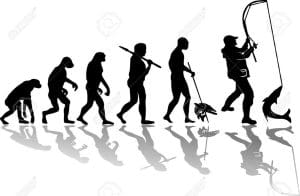
Fishing Methods Across Time:
Exploring the roots of fishing leads us to discover a spectrum of methods employed globally. From the simple fishing rods and nets of our ancestors to the innovative techniques of industrial fishing, each method tells a story of human adaptation to the changing dynamics of the oceans.
Hand Fishing and Traditional Nets:
In ancient times, humanity faced the waves with manual dexterity and meticulously woven nets. These techniques were not just tools but also expressions of the profound connection between humans and the ocean.
Modern Technologies Transforming the Seas:
Today, fishing has been transformed by astonishing technological innovations. Vessels equipped with advanced navigation systems and state-of-the-art trawl nets have revolutionized how we pursue marine riches.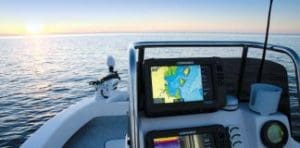
Impact of Technological Innovations:
As we delve into this marine universe, it is crucial to understand how technological innovations have left their mark on the fishing industry.
Technological Advances:
While modern tools facilitate massive catches, they also pose significant challenges to oceanic resilience in animals. Uncontrolled exploitation could negatively impact marine populations, jeopardizing the long-term sustainability of this ancient
Challenges Faced by Fishing Communities.🐟
In the vast expanses of our seas and rivers, fishing communities encounter a myriad of challenges that test their resilience and determination. These challenges, both environmental and socio-economic, deeply impact the lives and livelihoods of those dependent on fishing as an occupation.
Environmental Challenges:
The very nature of the marine environment presents challenges that fishermen must confront on a daily basis.
- Overexploitation of Marine Resources: The overexploitation of marine resources poses a constant threat to the sustainability of fishing. The unrestrained pursuit of commercial species has led to alarming declines in populations, endangering biodiversity and the health of marine ecosystems.

- Climate Change and its Effects: Climate change has dramatically altered climate patterns and ocean currents, affecting the distribution and migration of species. This challenges fishermen’s ability to predict and adapt to changing environmental conditions.
- Destruction of Marine Habitat: The degradation of marine habitats, whether due to pollution, destructive fishing practices, or coastal development, threatens the survival of numerous species and diminishes opportunities for sustainable fishing.

Socio-economic Challenges:
In addition to environmental challenges, fishing communities face socio-economic difficulties that impact their well-being and stability.
- Fluctuations in the Fishing Market: Fluctuations in fish product prices can dramatically affect fishermen’s incomes, creating economic uncertainty and financial hardships for families dependent on this occupation.

- Regulation and Compliance: Fishing regulations can be complex and challenging to comply with, especially for small fishing communities. Quota restrictions, fishing seasons, and other conservation measures may limit fishing opportunities and create tensions between fishermen and regulatory authorities.
- Inherent Perils of the Occupation: Fishing is an inherently hazardous occupation, with inherent risks such as adverse weather conditions, accidents at sea, and long working hours. Ensuring workplace safety and protecting fishermen are crucial concerns to guarantee their well-being and survival.
Facing these challenges with courage and determination, fishing communities strive to preserve their preservation of native fishing heritage and ensure a sustainable future for generations to come. Collaboration between governments, conservation organizations, and local communities is essential to comprehensively address these challenges and promote responsible and equitable fishing practices.
Fishing and Cultural Heritage.🐟
The connection between fishing and cultural heritage is like a thread that binds generations, weaving tales of communities relying on the waters for more than just sustenance. Exploring the cultural significance of fishing across different societies allows us to immerse ourselves in a world where fishing traditions are more than mere practices; they are expressions deeply rooted in cultural identity.
Fishing as Cultural Celebration:
Rituals and Fishing Festivals:
In many cultures, fishing is celebrated through rituals and festivals that honor the relationship between the community and the ocean. These events not only reflect the economic importance of fishing but also emphasize its role in social cohesion and cultural celebration.
Art and Fishing Literature:
Throughout history, fishing has inspired artistic and literary forms that capture the essence of marine life and fishermen’s experiences. From vibrant paintings to orally transmitted stories, fishing art and literature are creative expressions that keep alive the cultural richness tied to the sea.
Fishing Tradition and Cultural Identity:
Attire and Fishing Craftsmanship:
Traditional attire and fishing craftsmanship are not only aesthetic expressions but also a way to preserve skills and techniques passed down through generations. Every woven thread and each detail of the attire tells the story of a community deeply rooted in its fishing tradition.
Oral Narratives and Fishing Folklore:
Oral narratives and fishing folklore are cultural treasures conveying myths, legends, and lessons of wisdom. These stories not only entertain but also preserve the rich cultural heritage related to fishing.
Preserving Cultural Identities Through Fishing:
In a constantly changing world, fishing traditions play an essential role in preserving cultural identities. Through rituals, art, narratives, and attire, fishing communities cling to their roots, reminding us that fishing is more than an occupation; it is a cultural legacy deserving celebration and protection.
What are the main challenges faced by fishermen?
Fishermen confront a series of challenges that extend beyond the waters they navigate. Overexploitation of resources, environmental changes, and market fluctuations are some of the crucial obstacles. The struggle to maintain a sustainable balance between catch and the preservation of marine life is a constant battle that demands innovative strategies and global collaboration.
How has technology changed the fishing industry?
Technology has radically transformed the fishing industry, from vessels equipped with state-of-the-art navigation systems to fish-tracking devices and modern catch techniques. While these advancements have improved efficiency, they also pose challenges such as overfishing and the need for sustainable fishery management. Technology, therefore, requires careful and equitable implementation to ensure the long-term health of our oceans.
What are some sustainable fishing practices?
Sustainable fishing is essential for the preservation of our oceans. Practices like selective fishing, quota-based management, and the establishment of marine protected areas are key strategies. Additionally, promoting traditional fishing methods and educating about the importance of respecting species’ reproduction cycles are fundamental. Collaboration among fishermen, scientists, and governments is crucial to ensure that future generations can continue to enjoy the fruits of the sea sustainably.

